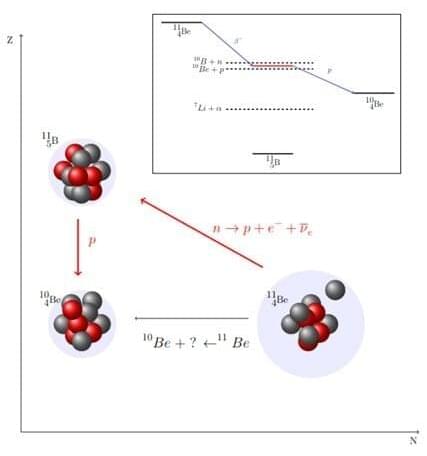Most mass in everyday matter around us resides in protons and neutrons inside the atomic nucleus. However, the lifetime of a free neutron—one not bounded to a nucleus—is unstable, decaying by a process called beta decay. For neutrons, beta decay involves the emission of a proton, an electron, and an anti-neutrino. Beta decay is a common process.
However, scientists have some significant uncertainties about the neutron lifetime and about the neutron decaying inside a nucleus that leads to a proton emission. This is called beta-delayed proton emission. There are only a few neutron-rich nuclei for which beta-delayed proton emission is energetically allowed. The radioactive nucleus beryllium-11 (11 Be), an isotope that consists of 4 protons and 7 neutrons, with its last neutron very weakly bound, is among those rare cases. Scientists recently observed a surprising large beta-delayed proton decay rate for 11 Be. Their work is published in Physical Review Letters.
The discovery of an exotic near-threshold resonance that favors proton decay is a key for explaining the beta-delayed proton decay of 11 Be. The discovery is also a remarkable and not fully understood manifestation of quantum many-body physics. Many-body physics involves interacting subatomic particles. While scientists may know the physics that apply to each particle, the complete system can be too complex to understand.
